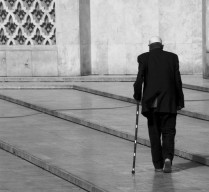1603786037-4/madrassa-blast-(7)1603786037-4-640x480.webp)
The Tehreek-e-Taliban Pakistan (TTP) and its affiliates remained the major actors of instability in Pakistan in the year 2020, which perpetrated a combined total of 67 terrorist attacks or about 46 per cent of the total reported attacks in 2020, mainly in the erstwhile Fata.
The TTP also successfully brought its few breakaway factions and some other militant groups and commanders into its fold. Another religiously inspired militant group, the Islamic State, perpetrated two major attacks in 2020 in Quetta and Peshawar. While six Baloch insurgent groups were found active in Balochistan in 2020, the Balochistan Liberation Army (BLA) and Baloch Liberation Front (BLF) were the two major groups, which carried out 24 attacks out of the total 34 assaults perpetrated by Baloch insurgents. Meanwhile, Sindhi nationalist groups perpetrated 10 terrorist attacks in Sindh in 2020, including eight by Sindhudesh Revolutionary Army alone.
These statistics were revealed in the Pakistan Institute for Peace Studies' (PIPS) Pakistan Security Report 2020.
On the whole, the report expounded, marking a decline of over 36% from the year before, different militant, nationalist/insurgent and violent sectarian groups perpetrated a total of 146 terrorist attacks, including three suicide blasts, across Pakistan in 2020.
These attacks claimed in all 220 lives – a decline of 38% from those killed in such attacks in 2019 – and injured another 547 people.
Out of the total 146 attacks, 95 were perpetrated by religiously inspired militant groups, another 44 by Baloch and Sindhi insurgents, and seven attacks were sectarian-related.
Despite this statistical decline in the incidents of terrorism, the PIPS report underlined that the more severe challenge of religious extremism continued to manifest in 2020 such as the enormous gathering at Khadim Rizvi's funeral in Lahore; growing individual/mob attacks on minority communities and their worship places; persisting narratives of hatred; and continuing activities of banned religious organisations, etc. There is also little evidence to suggest that the National Action Plan has been successful in countering these and related challenges. The problem is also linked to Pakistan's efforts to comply with the FATF conditions by February 2021 in order to get off the grey list.
Khyber-Pakhtunkhwa witnessed the highest number of terrorist attacks for any one region of Pakistan, where 79 recorded terrorist attacks (31 in North Waziristan alone) claimed 100 lives and inflicted injuries on another 206 people.
In Balochistan, 95 people were killed and 216 others were injured in 42 reported attacks. Different Baloch insurgents groups perpetrated 32 attacks and religiously inspired militant groups such as the TTP, Hizbul Ahrar and ISIS-affiliates were reportedly involved in as many as 10 attacks in Balochistan.
As many as 18 terrorist attacks happened in Sindh province – 15 in Karachi and three in interior Sindh – which killed a total of 20 people and injured 66 others. Seven terrorist attacks took place in Punjab in 2020, which claimed five lives and injured 59 people.
Compared to 28 in the year before, security forces and law enforcement agencies conducted 47 anti-militant operational strikes in 2020 in 22 districts and regions of Pakistan. These actions killed 129 militants, while 17 Pakistan Army soldiers were also martyred. Security and law enforcement agencies also entered in a total of 15 armed clashes and encounters with militants that claimed 38 lives (29 militants, seven security personnel and two civilians).
A total of 125 cross-border attacks took place in Pakistan in 2020 with Afghanistan (11 attacks) and India (114). As many as 62 people lost their lives in these attacks, showing a decrease of about 34% from the year before, while another 222 were also injured.
Those 62 Pakistani citizens martyred in cross-border attacks included 42 civilians, 18 army officials, and two FC personnel.
When counted together, as many as 373 incidents of violence of different types were recorded across Pakistan. Apart from 146 terrorist attacks, these violent incidents also included a combined total of 125 cross-border attacks from India and Afghanistan; 47 anti-militant operational strikes carried out by security forces and their 15 armed clashes/encounters with militants; eight incidents of communal/faith-based violence; 14 thwarted/failed terror plots; three inter-militant clashes; two clashes between security forces and protestors; one sectarian clash; one incident of ethno-political violence; and 11 targeted attacks, whose motivation was not clear. These overall incidents of violence killed a total of 503 people and injured 851 others. DNA




















COMMENTS
Comments are moderated and generally will be posted if they are on-topic and not abusive.
For more information, please see our Comments FAQ